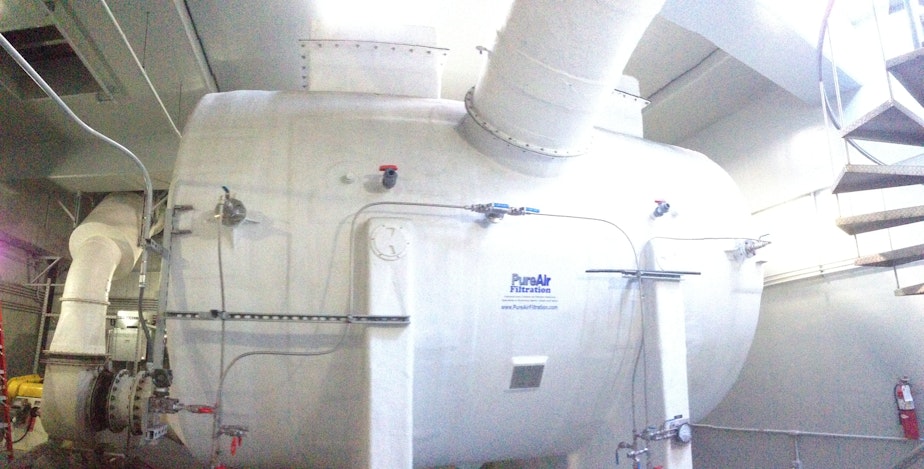The Secret of the Seattle Stink. Help us solve this mystery
It's a dark, rainy night, and Pamela Sackett and I head to south Seattle, to the banks of the Duwamish River, in search of a mysterious odor.
This odor torments her. Sackett describes it as a “sweet, sickly, fertilizer smell” so repugnant she sleeps with her windows shut tight, even in the summer heat.
“It wakes me up," Sackett says. "It’s something I don't feel I should be breathing."
Her neighbors in the Seward Park area smell it too. Sackett shows me social media posts. Some say it’s a milk processing plant. Others believe it’s a crematorium.
It's a mystery, one Sackett wants solved.
Seattle coped with bad smells for more than a century, says historian Melanie Kiechle.
Sponsored
"People in Seattle around the turn of the 20th century would have encountered a wide range of smells,” Kiechle says.
In 1905, the Seattle Daily Times complained that the raw sewage of 50,000 people emptied directly onto the tide flats. When the tide went out the entire city smelled like a porta potty at the end of a hot weekend.
It was so bad that even animal poop couldn't compete.
“The city was powered by animals, so there was horse manure everywhere, and nobody would have really thought twice about that," Kiechle said.
Seattle is bigger today, but it also smells better. That’s thanks to thousands of facilities dedicated to masking our bad smells. Across the King County are dozens of underground filtration systems that mask the smell of human waste coursing through pipes beneath city streets.
Sponsored

Other businesses across the region — from soup factories to marijuana grows — must use similar equipment to beat back bad smells.
Odor-fighting machines are permitted and inspected by the Puget Sound Clean Air agency, says manager Rick Hess. Hess's team of inspectors will drive around with their windows open to track down putrid smells.
Pamela Sackett has complained to The Puget Sound Clean Air agency, but so far they haven't identified the source.
According to Sackett, that’s because inspectors have visited her during the day when the smell isn’t there. She says the smell wafts in at night.
Sponsored
So here we are, in this care, in the rain, in the dark, searching for the stink.
We wind down a narrow road next to the Duwamish River ... until before us is a meat rendering plant that glows under giant fluorescent lights.
This plant turns truckloads of blood, feathers, and animal carcasses into products like tallow and bone meal. There is a distinctive odor right outside the plant.
It’s not pleasant but nor is it unbearable. Sackett inhales.
“It smells like animals being ground up,” she said.
Sponsored
Is it the same stench that's been tormenting her?
“It's not that smell! It's not the smell!” Sackett said.
We can't find it. The Puget Sound Clean Air Agency can't find it. So we're turning to you to, dear reader.
If you live or travel between Columbia City and the Rainier Valley, have you smelled a “sweet, sickly, organic smell,” especially at night?
If so, please comment on our Facebook page and email dhyde@kuow.org to help us solve the Secret of the Seattle Stink.




